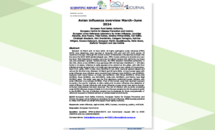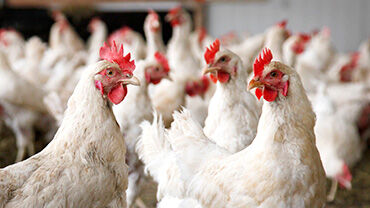Avian influenza overview March - June 2025
Between 8 March and 6 June 2025, 365 highly pathogenic avian influenza (HPAI) A(H5) virus detections were reported in domestic (167) and wild (198) birds across 24 countries in Europe. HPAI A(H5N1) virus detections were predominant and mainly located in western, central and south-eastern Europe.
Most detections in wild birds concerned waterfowl, particularly swans and geese, but also gulls were involved. Poultry establishments, particularly domestic ducks and chickens, continued to be affected in large numbers in Hungary and Poland. In mammals, HPAI A(H5N1) and A(H5N5) virus detections were reported in a domestic cat, red foxes, Eurasian otters and grey seals. For the first time ever, HPAI A(H5N1) viral infection was detected in a sheep in the United Kingdom. Outside Europe, the United States of America (USA) continued to report A(H5N1) virus detections in dairy cattle, while the virus was found for the first time in a gray fox (USA), a leopard cat (South Korea) and a long-tailed weasel (USA).
Between 8 March and 6 June 2025, 20 cases of avian influenza virus infection in humans, including four deaths, were reported in six countries: Bangladesh (two A(H5N1) cases), Cambodia (two A(H5N1) cases), China (one A(H10N3), one A(H5N1), and 11 A(H9N2) cases), India (one A(H5N1) case), Mexico (one A(H5N1) case), and Viet Nam (one A(H5N1) case). Most of the A(H5N1) human cases (n = 5/8) reported exposure to poultry prior to detection or onset of illness. Given the widespread circulation of avian influenza viruses in animal populations, human infections remain rare. No human-to-human transmission has been documented during the reporting period. The risk of infection with the avian A(H5) clade 2.3.4.4b influenza viruses currently circulating in Europe remains low for the general public in the European Union/European Economic Area (EU/EEA) and low-to-moderate for those occupationally or otherwise exposed to infected animals or contaminated environments.
Download








